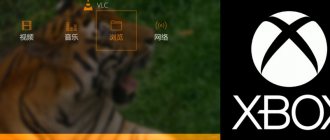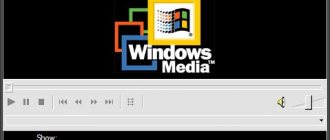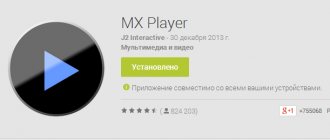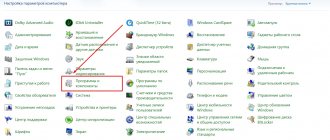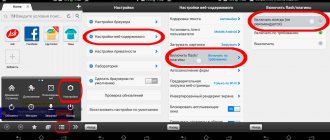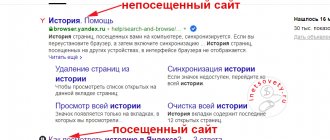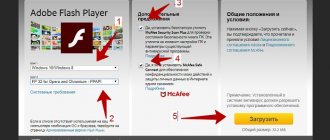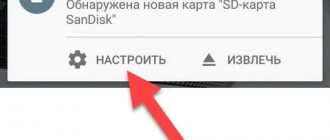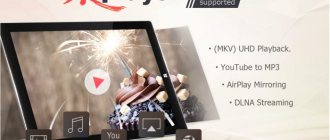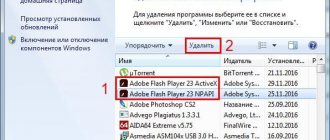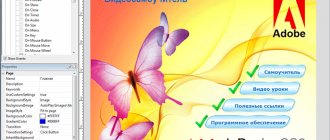Interest in the VLC player, developed by enthusiasts since 1996 as part of the VideoLAN project, is due to several reasons. Firstly, the mentioned product is extremely popular among free software supporters (the number of downloads exceeds 485 million!) and is available for all kinds of operating systems, including mobile ones. Secondly, not long ago there was a major release of a new build of the program, which has matured to version 2.0.x and received a lot of interesting functions. Finally, thirdly, for many users VLC is still associated exclusively with a tool for watching video and listening to audio, the powerful filling of which allows you to solve much more interesting problems in practical terms. Today’s publication is devoted to a brief summary of them, equipped with an abundance of screenshots for greater clarity.
⇡#File conversion
With the widespread proliferation of portable computing devices with different technical characteristics, the problem of converting multimedia data from one format to another has become more relevant than ever, which can be dealt with in a jiffy using VLC. You just need to open the program, press Ctrl+R, on the “File” tab, select one or more objects that require processing and click on the “Convert/Save” button.
Next, you will need to enter the name of the resulting file, select an output format with a suitable profile for data compression and start the processing process by clicking the “Start” button. If you wish, you can go to the profile settings and play with codec parameters, picture resolution, bitrate and other audio/video characteristics, even including subtitles in the converted video. Adjusting codecs may require certain knowledge from the user, which can always be obtained on the pages of the VideoLAN Wiki reference and information site.
How to Import Youtube Playlist into VLC
The YouTube playlist extension (known as playlist_youtube.lua) for VLC is used to import a YouTube playlist into VLC. This way you can play a YouTube playlist directly from VLC Media Player.You need to add the lua script of this extension to the desired VLC folder. You will also have to replace the old youtube.luac file (located in the same folder where you need to add playlist_youtube.lua) with the new updated youtube.luac file. If the updated youtube.lua file is not added, some videos will not play. Below is how to do this.
The screenshot above shows how a YouTube video plays in VLC.
How to import YouTube Playlist into VLC?
You need to take a few simple steps:
Step 1: Download playlist_youtube.lua.
Step 2: Copy and paste this Lua script into Notepad. Next, save the script as “playlist_youtube.lua”. Don't forget to enter the Lua extension type.
Step 3: Now copy the saved playlist_youtube.lua file and paste it into the VLC playlist folder. This folder is available in the installation location of VLC Media Player. By default, its location will be: “C:\Program Files\VideoLAN\VLC\lua\playlist”.
Step 4: Use this link to get the updated youtube.luac file. Copy and paste all the contents into Notepad and save as "youtube.luac".
Step 5: Now you just need to copy the new youtube.luac and paste it into your playlist folder. This will help you replace the old youtube.luac file.
Step 6: Open VLC player and use the keyboard shortcut Ctrl + N to open the Open Media window. Here you need to enter the YouTube playlist URL. To do this, open YouTube and copy the URL. It should be something like this: www.youtube.com/playlist?list=PL………….
Step 8: Now just click on Play. After this, a selection of all video playlists will be available and you can stream any video to VLC simply by double-clicking.
.
Share:
Leave your comment!
- Comment on VKontakte
- Facebook comment
Comments
+3 Alexander 06/12/2016 20:25 And also, if we want to watch all the videos of the channel, and not just one playlist, then we go to the main page of the channel and there will be a line “All videos” and next to it “play all” , click it, a new page opens. And on it in the upper right corner there will be a line “Uploaded to the channel...”, copy this link and paste it into vlc.
Answer
+3 Suri 03/26/2020 09:25 Doesn’t open playlists.
Answer
Update list of comments
Add a comment
| Next > |
Similar articles:
- How to Get Unlimited Cloud Photo Space for Free
- Services for creating database diagrams and diagrams
- Free, anonymous, fast and convenient file hosting services
- How to send online video to VLC player in Microsoft Edge Chromium?
- Several services for creating graphs and charts online
- Screen Stopwatch: how long are you on your phone?
- FlexClip is a free tool for editing and creating videos online
- How to split/merge a PDF document?
- How to take a screenshot of an entire web page in Chome?
⇡#Using videos as the background of the working environment
One of the interesting features of the VLC player is the ability to output video directly to the desktop of the operating system. To activate multimedia wallpaper, the role of which can be played by your favorite movie, you should go to the advanced settings of the program and in the “Video” field, check the box next to the “Video on the desktop” item. After this, all that remains is to select a similar menu item in the main application window and make sure that the operations performed were beneficial to the cause.
Installing VLC Media Player to watch IPTV on your computer
After downloading, I run the file vlc-2.1.5-win64.exe.
We select the language in which the interface of the installed VLC program will be. For me, the most convenient language is Russian (English Russian) and click “OK”.
This will launch the VLC Media Player installation wizard.
To continue the installation, click the “Next” button. After which the VLC Media Player installation wizard informs me of the terms of use of this product.
Having read everything, I once again click “Next”. And in the next installer menu I select the components that will be installed on my computer. For myself, I choose everything that the installer offered me. The program does not take up much space and let it be as functional as possible from the initial installation.
The next thing I do is select the folder in which VLC Media Player will be installed. When all the preparatory steps have been completed, I click the “Install” button.
After the installation wizard has completed its work. Click the “Finish” button, after which VLC player is installed and ready for use.
⇡#Watching YouTube videos
It is well known that in order to view the content presented on the YouTube server, you need a browser with the Adobe Flash plugin installed or HTML5 support. If you don’t have an appropriate web browser at hand, the notorious VLC player can resolve the deadlock. The technique is simple: press Ctrl+N, copy the URL of the online video you like into the form for entering and click on the “Play” button. If you have a mediocre Internet channel, it would be a good idea to open a tab with additional parameters and adjust the amount of cache memory used when playing YouTube content. This kind of foresight will help you avoid annoying pauses during video playback.
Where can I download VLC Media Player?
VLC Media Player can be downloaded from the official website. You can select a VLC Media Player build suitable for your software (or by clicking on the link ).
To do this, enter https://www.videolan.org/vlc/ in the address bar.
Press the “Enter” key and we go to the official website of VLC media player. As you can see on the main page on the right there is a “Download VLC” button. By clicking on it you will download the 32-bit version for Windows.
You can choose a VLC player that suits your operating system. Personally, I will search for “Windows 7 x64”. To do this, on the first page of the site I find a section called Official Downloads of VLC media player. In it I select the “Windows” subsection and click “Download VLC for Windows” (English Get VLC for Windows).
A new page opens in front of me, on which I find “Download VLC for Windows x64”. Next, I select “VLC 64 bits for Windows 64 bits” (English: VLC 64bits version for Windows 64 bits).
And again a new page opens in which you need to select the appropriate file type. The type of file extension that I will download, so as not to miscalculate, is with the EXE extension. Namely vlc-2.1.5-win64.exe.
⇡#Transcription of audio recordings
The issue of converting voice recordings into text format often baffles even experienced computer users: the corresponding software tools that simplify the solution of the problem are a big deal, and often they are of no use at all. In such cases, it is much more effective to use VLC with the “Step back”, “Step forward” and “Cycle A → B” keys placed on the toolbar through the interface settings. Using the mentioned controls, you can instantly rewind the recording ten seconds forward and backward and activate cyclic scrolling of selected sections of the audio file, which is useful when transcribing lectures, interviews, dictations of translators and other audio data.
Users with good memory can, instead of customizing the program interface, resort to the practical use of the player’s hot key system, which allows performing various actions, including rewinding the content being played on the computer. It should be noted that almost all VLC controls are duplicated by corresponding keyboard shortcuts, configurable depending on the user’s preferences.
⇡#Organization of streaming audio/video broadcasting
And this task can be handled using VLC. In order to use the player as a server for streaming multimedia content, you need to make a number of program settings, guided by this (in English) or this (in Russian) instructions. In particular, you will need to decide on the broadcast source, select the network protocol that will be used for online broadcasting, set the settings for transcoding data into a suitable format, and activate the transmission of the media stream to client machines. Since multimedia broadcasts impose very strict requirements on the bandwidth of communication channels, before deploying a video server, it would be correct to make sure that the Internet connection you are using is capable of withstanding a powerful flow of outgoing traffic.
⇡#Saving streaming content to a file
Since we are talking about organizing online broadcasting using VLC, it would be logical to mention the player’s ability to not only distribute content over the network, but also save streaming content broadcast by someone to disk, automatically converting it to the most preferred format. This operation is carried out by analogy with the method described above for viewing YouTube videos, with the only exception that after entering the URL you need to click not “Play”, but “Convert”. A window will open with settings for saving the input stream and parameters of the codecs that will be used to convert the data. After cleaning them up, you can, keeping in mind copyrights and copyrights, begin to “rob” the audio/video stream.
Key features of VLC media player
VLC player has a built-in set of codecs that allow it to play video files in all existing formats. It can also play damaged files - those not fully downloaded using uTorrent, recovered after deletion. It can be used to listen to audio CDs, watch DVD videos, play streaming videos and online radio. It is possible to record streaming audio and video on a computer. VLC Media Player can act as a media server and broadcast audio and or video streams within a local network.
⇡#Taking screenshots from a video stream
Unlike a number of alternative media players, VLC includes special tools for creating snapshots of movies being played. There is no need to mess around with the Print Screen key, the operating system clipboard and graphic editors - just press Shift+S and the program will automatically write the selected frame to the computer disk in the specified directory. By default, images are saved in PNG format, which can be changed to JPG if desired.
⇡#Remote player control
Another documented but rarely used feature of VLC is the ability to remotely manipulate the program via a web interface. The beauty of it is that any computing device connected to a local network with an Internet browser on board, be it a smartphone or tablet, can act as a remote control. Those interested can personally see the flexibility of this tool by activating the remote control interface in the player settings and connecting to it through a browser. “Over the air” you can control almost all the main functions of the application: adjust the volume, control file playback and playlist, manipulate equalizer settings and other VLC parameters.
Setting up VLC Media Player to watch IPTV on your computer
VLC Media Player has a simple and intuitive interface. It has many custom settings, so you can easily make it comfortable and attractive for yourself.
The main functions that we will need at this stage of getting to know VLC Media Player:
1.Opening a list of TV channels, a file with the extension “.m3u” . The list of TV channels, also known as playlist, must first be downloaded from the official resource of your Internet provider. In order to open the playlist, you need to click on the “Media” button in the running VLC Media Player. It's the find button in the top left corner.
Then everything proceeds as if opening a regular multimedia file. We find on our computer the folder in which we saved the playlist and open it. There is a playlist.m3u file there. select it and click open.
After a few seconds, a picture of one of the TV channels should appear on your screen.
2.The second way to watch TV shows through VLC Media Player is to enter the playlist address . The playlist address, as well as the playlist itself, must be provided by the Internet provider. In order to add the address (URL) of the playlist, we open “Media”. In it we find a line called “Open URL...”
Then we register it manually, or copy it from the Internet provider’s resource and paste the playlist address.
You just need to wait a little and a picture of one of the playlist channels will appear on the screen.
⇡#Assembling video puzzles
For those who like to while away their free time solving various kinds of puzzles and logic puzzles, VLC can also serve them well. No tricks or shamanic dances with a tambourine - just open a window with graphic effects, check the box next to the “Puzzle” item and get from the playing video a mosaic broken into many fragments, which must be assembled into a single whole. The difficulty of the game can be adjusted by increasing the rows and columns that make up the puzzle. Control is carried out by deftly moving elements with the mouse.
⇡#View photos
While designed for working with multimedia data, VLC copes well with other tasks. Thanks to built-in support for JPG, PNG, XCF, GIF, TIFF, LBM, PCX and Targa (TGA) graphic formats, the player can be used as a simple image viewer that perfectly complements the program's capabilities listed above.
It is hoped that the note we published will serve as good food for thought for all VLC users and, perhaps, will force someone to radically reconsider their attitude towards opensource solutions, which are often head and shoulders above commercial products. Both in terms of the quality of implementation, and in terms of the functionality carefully laid out by the developers.
